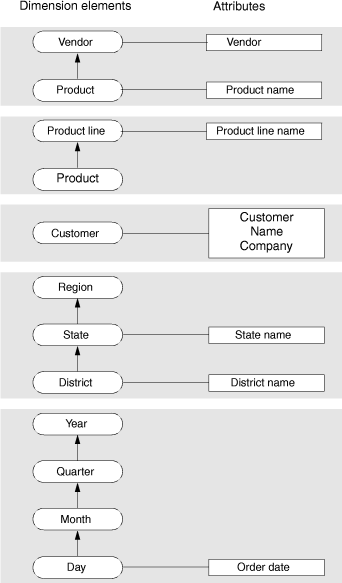Identify the dimensions and hierarchies
After you determine the granularity of the fact table, it is easy to identify the primary dimensions for the data model because each component that defines the granularity corresponds to a dimension.


In most cases, the dimension elements need to express the lowest possible granularity for each dimension, not because queries need to access individual low-level records, but because queries need to cut through the database in precise ways. In other words, even though the questions that a data warehousing environment poses are usually broad, these questions still depend on the lowest level of product detail.
Product dimension
The dimension elements for the product dimension are product, product line, and vendor:- Product has a roll-up hierarchical relationship with product line and with vendor. Product has an attribute of product name.
- Product line has an attribute of product line name.
- Vendor has an attribute of vendor.
Customer dimension
The dimension element for the customer dimension is customer, which has attributes of customer, name, and company.Geography dimension
The dimension elements for the geography dimension are district, state, and region:- District has a roll-up hierarchical relationship with state, which has a roll-up hierarchical relationship with region.
- District has an attribute of district name.
- State has an attribute of state name.
Time dimension
- Day has a roll-up hierarchical relationship with month, which has a roll-up hierarchical relationship with quarter, which has a roll-up hierarchical relationship with year.
- Day has an attribute of order date.